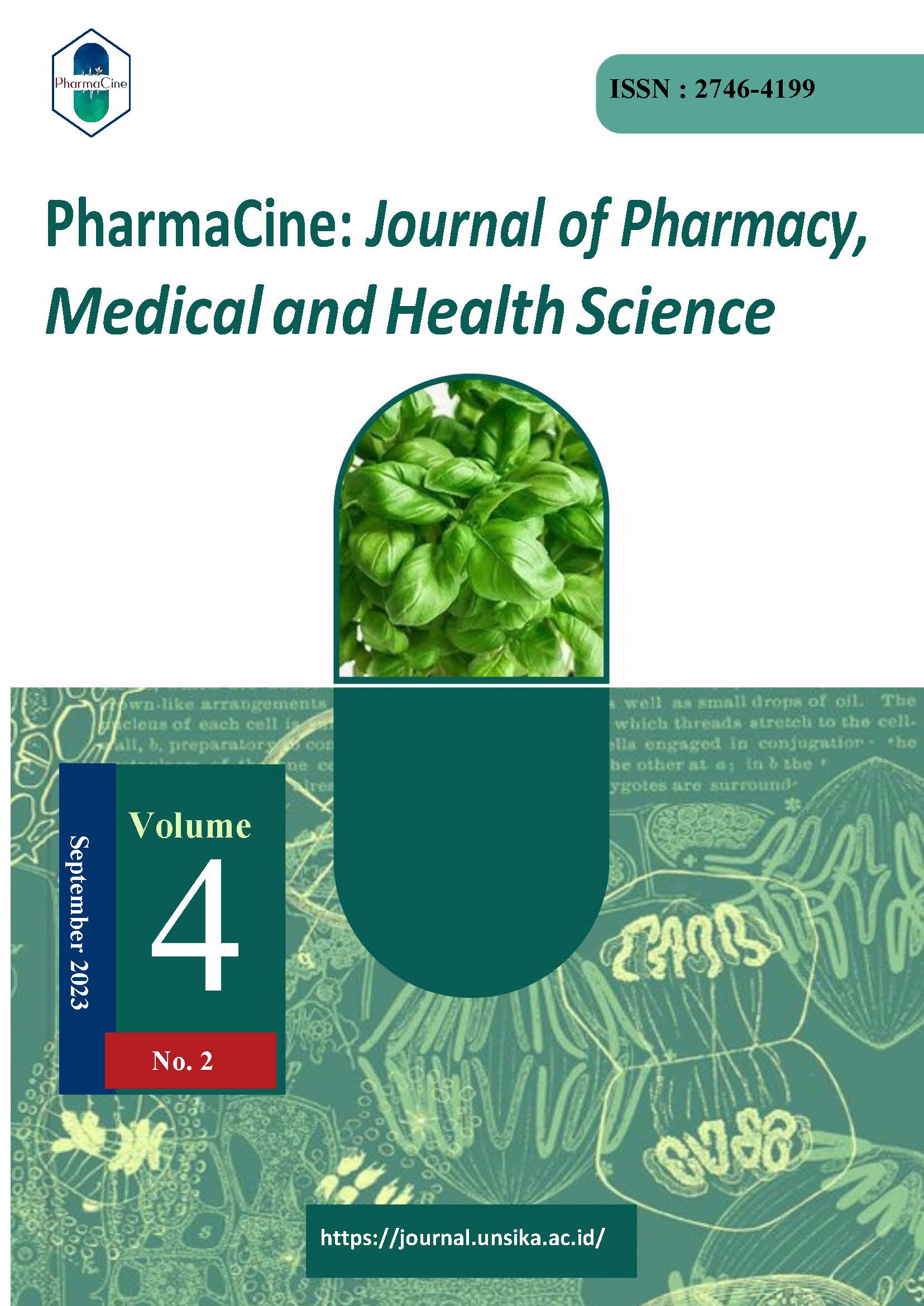Early Detection of HIV (Human Immunodeficiency Virus) using Immunochromatography Method in Adolescents in Bontovillage Bulaeng
Main Article Content
Abstract
Background: Human immunodeficiency virus (HIV) is a virus that weakens the human immune system, making people with the virus unable to fight various diseases that attack their bodies. Di sisi lain, Acquired Immunodeficiency Syndromes (AIDS) are symptoms that result from HIV infection that weakens the human immune system. Symptoms resulting from a weakening of the Human Immune System caused by HIV infection. The causes of Human Immunodeficiency Virus (HIV) are sexual intercourse, use of non-sterile syringes among drug users, use of piercings or tattoos, blood transfusions containing the HIV virus. Aim: The aim of the research is to determine the results of early detection of HIV (Human Immunodeficiency Virus) using the immunochromatography method in adolescents in BontoBulaeng Village. Method: This research method is descriptive research. This research was preceded by administering a questionnaire to obtain criteria in accordance with the research, HIV testing was carried out on adolescents using the immunochromatography method. This research began by giving questionnaires to respondents to obtain criteria that were appropriate to the research. Data analysis in this study used the SPSS frequency descriptive statistical test. Result: The results of this research were HIV tests on 30 teenagers, negative results were obtained (100%). Conclusion: Early detection of HIV using the immunochromatography method in adolescents in Bonto Bulaeng Village showed negative results for 30 samples (100%).
Keywords: HIV, Teenager, Immunochromatografi
Downloads
Article Details

This work is licensed under a Creative Commons Attribution-ShareAlike 4.0 International License.
Authors who publish in PharmaCine: Journal of Pharmacy, Medical and Health Science agree to the following terms:
- Authors retain copyright and grant the journal right of first publication with the work simultaneously licensed under a Creative Commons Attribution-ShareAlike 4.0 International License that allows others to share the work with an acknowledgment of the work's authorship and initial publication in this journal.
- Authors can enter into separate, additional contractual arrangements for the non-exclusive distribution of the journal's published version of the work (e.g., post it to an institutional repository or publish it in a book), with an acknowledgment of its initial publication in this journal.
- Authors are permitted and encouraged to post their work online (e.g., in institutional repositories or on their website) prior to and during the submission process, as it can lead to productive exchanges, as well as earlier and greater citation of published work (See The Effect of Open Access).
PharmaCine : Journal of Pharmacy, Medical and Health Science by https://journal.unsika.ac.id/ is licensed under a Creative Commons Attribution-ShareAlike 4.0 International License.
You are free to:
- Share, copy and redistribute the material in any medium or format
- Adapt, remix, transform, and build upon the material for any purpose, even commercially.
- The licensor cannot revoke these freedoms as long as you follow the license terms.
References
Ariyanti, K. S. (2020). Gambaran PengetahuanRemajatentang HIV/AIDS di SMA Negeri 1 Baturiti. JurnalMedikaUsada, 3(2), 54-59.
Baderiah, B. (2019). Gambaran Pengetahuan Dan Sikap Remaja Tentang Hiv/Aids Di Sma 24 Bone Tahun 2018. Jurnal Ilmiah Kesehatan Diagnosis, 14(2),118–121. https://doi.org/10.35892/jikd.v14i2.137
Febrianti, R., & Wahidin, M. (2019). Gambaran Tingkat Pengetahuan dan SikapRemajaTentang HIV/AIDS di SMK Negeri 3 Jambi Tahun 2018. UNES Journal Of Social and Economics research, 4(1), 042-047.
emenkes RI. (2020). Infodatin HIV AIDS. Kementerian Kesehatan Republik Indonesia,1–8. https://pusdatin.kemkes.go.id/resources/download/pusdatin/infodatin/infodatin-2020-HIV.pdf
Ketut, I., Priastana, A., Sugiarto, H., & Homepage, J. (2018). Hubungan Tingkat Pengetahuan tentang HIV/AIDS dengan Sikap Pencegahan HIV/AIDS pada Remaja (Correlation between Knowledge of HIV/AIDS and Prevention Attitude against HIV/AIDS in Adolescents) Indonesian Journal of Health Research. Indonesian Journal of Health Research, 1(1), 1–5. https://orcid.org/0000-0003-4227-3456
Martilova, D. (2020). Faktor Yang MempengaruhiPengetahuanRemajaDalamPencegahan HIV AIDS dI SMA N 7 Kota PekanbaruTahun 2018. JOMIS (Journal of Midwifery Science), 4(1), 63-68.
Ratih WU,2012. Strategi Pemeriksaan Laboratorium anti HIV,Jurnal farmasi Sains dan Komunitas,November 2012,hlm 98-103 ISSN : 1693-5683 Vol 9 No.2
Sutrasno, M. A., Yulia, N., & Rumana, N. A. (n.d.). Literature Review Gambaran Karakteristik Pasien HIV / AIDS di Fasilitas Pelayanan Kesehatan di Indonesia. Jurnal Manajemen Informasi Dan Administrasi Kesehatan Dministrasi Kesehatan, 05, 50–59.
Syafrie, I. R., Tepi, D., Pratiwi, M. R., Pastike, K. D., & Bengkulu, D. (2022). Deteksi Dini Tanda Bahaya Dengan Pemeriksaan HIV / AIDS. 1, 63–68.

